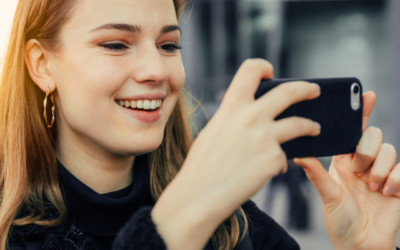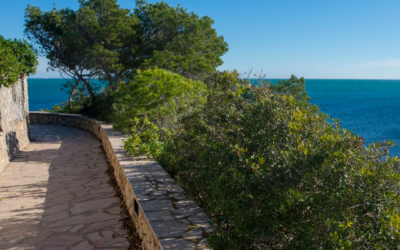Catalonia, one of Spain’s autonomous communities, known for its rich history, vibrant culture and, especially, its gastronomic diversity, is home to cava, a sparkling wine that has become a symbol of celebration and joy, a hallmark of Catalan culture. It has become much more than a drink, being an expression of identity and an integral part of the Catalan wine heritage.
In this blog, we want you to explore the history of cava, its production process, the producing regions in Catalonia and all the tourist activities that revolve around this type of wine. If you want to come and taste the best cavas in the territory, you can move to Barcelona and surroundings, Costa Brava and Costa Dorada with Shuttle2Sun‘s shared transfer services and private transfer services, low-cost and sustainable, from Barcelona airport, Barcelona port, Reus airport, Girona airport and Camp de Tarragona AVE train station. Remember that you can book your transfer up to 24 hours in advance.
Cava: a unique sparkling wine
Cava is a sparkling wine of Catalan origin that has earned a prominent place in the world of viticulture for its quality, versatility and elegance. Produced mainly in the Penedès region, cava is distinguished by its production methods and its unique organoleptic qualities.
This drink is characterised by its pale golden colour, with fine, persistent bubbles that form a crown on the surface of the liquid.
Specific grape varieties native to Catalonia are used for its production, such as Macabeo, which provides freshness and fruity notes, with aromas of apple and pear; Xarel-lo, which provides body and structure, as well as complexity and herbaceous notes; and Parellada, providing acidity and elegance, with floral and citrus aromas. In addition to these three, which are the most used, the Chardonnay and Pinot Noir grapes are also chosen, especially for the production of high-end cavas.
The final product is classified according to its level of sweetness, from Brut Nature, with no added sugar; Extra Brut; Brut; Extra-Dry; Dry; Semi-Dry; and, finally, Sweet, with more than 50 grams of sugar per litre.
In the case of younger cavas, they are usually fresher and lighter, while those with a longer ageing process have a creamier texture and persistent flavours.

In addition to its refreshing characteristic, cava stands out for its great versatility when it comes to pairing with a wide variety of dishes, from appetizers, seafood and fish, to white meats and even desserts, especially those made with fruit and creams.
With Shuttle2Sun‘s low-cost and sustainable shared transfer services and private transfer services, you can reach any location, from Barcelona airport, Barcelona port, Reus airport, Girona airport and Camp de Tarragona AVE train station.
Sant Sadurní d’Anoia, the birthplace of cava
The history of cava in Catalonia dates to the 19th century, a period of great changes and advances in European viticulture. Specifically, we travel to the town of Sant Sadurní d’Anoia, now known as the capital of cava.
Centuries ago, France had already popularised the consumption of sparkling wine, known as Champagne, using a traditional method that consisted of a second fermentation in the bottle, which generated the creation of bubbles.
The farmers of Sant Sadurní d’Anoia, after the arrival of phylloxera devastated the vineyards of the Penedès during the second half of the 19th century, decided to start again with their crops, applying this traditional method with the native white grapes: Macabeo, Xarel-lo and Parellada.

The DO Cava designation of origin was not approved until 1972, delimiting the production areas. Currently, there are four different areas in Spain: Comtats de Barcelona, Valle del Ebro, Viñedos de Almendralejo and Requena. The DO Cava regulates aspects such as the permitted grape varieties, the production method and the minimum ageing times, ensuring the quality and authenticity of the product.
In the case of Catalonia, the Comtats de Barcelona area is divided into different sub-areas: Valls d’Anoia-Foix, Serra de Mar, Conca del Gaià, Serra de Prades and Pla de Ponent, where you will find a wide variety of exclusive cavas of excellent quality.
Plans to enjoy the best cavas
Catalonia, with its rich winemaking tradition, offers countless opportunities to enjoy cava. This sparkling wine, a symbol of celebration and quality, can be experienced in a variety of ways in its region of origin. One of the most popular plans for wine lovers is to visit the different wineries in the Penedès, the main cava region in Catalonia, which is home to a wide range of cava producers.
Some of the most outstanding are, for example, Codorníu, a winery in Sant Sadurní d’Anoia that remembers more than 450 years of history. You can take different tours with tastings of premium cavas and aperitifs, while you go inside a building with a lot of history, in the modernist style, designed by the renowned Catalan architect Josep Puig i Cadafalch.
Another is Bodegas Freixenet, in the same town, the most important cava producer in the region, which offers tours that combine history, modernity and a tasting of its products. The experience includes a trip through its underground cellars. In addition to these two, there are many other wineries that offer tours of their vineyards and tastings, such as Familia Torres, Llopart, Caves Vilarnau, Sabaté i Coca, Sumarroca, Gramona, Torelló, Segura Viudas, among many others.
If your plan is to visit several of them, you can opt for a route that connects different enclaves and offers you an unbeatable joint experience, such as Camins del Cava, a wine tourism proposal, with walks among vineyards, visits to wineries and excellent gastronomy in the different restaurants in the area.
On the other hand, if you want to learn in depth about the history of cava and its role in Catalan culture, you can’t miss out on visiting different museums in the area, such as the Cava Centre in Sant Sadurní d’Anoia, an interactive centre that offers an immersion into the history of cava, from its origins to the present day, with multimedia exhibitions and activities for all ages; and the VINSEUM, a wine museum in Vilafranca del Penedès, which includes sections dedicated to cava and its impact on the region, as well as information about wine in general.
Enjoy all that the Catalan wine heritage has to offer. Shuttle2Sun offers shared transfer services and private transfer services, low-cost and sustainable, from Barcelona airport, Barcelona port, Reus airport, Girona airport and Camp de Tarragona AVE train station. Remember that you can book your transfer up to 24 hours in advance.



